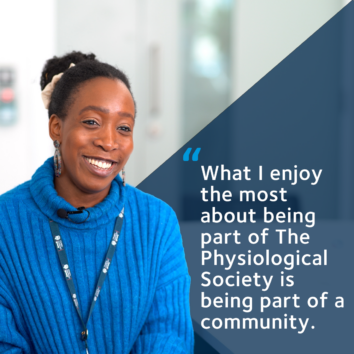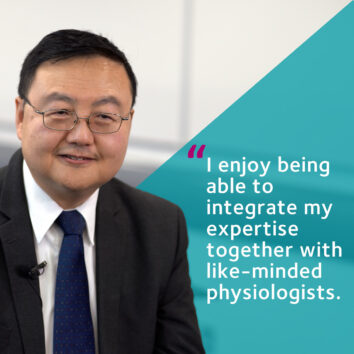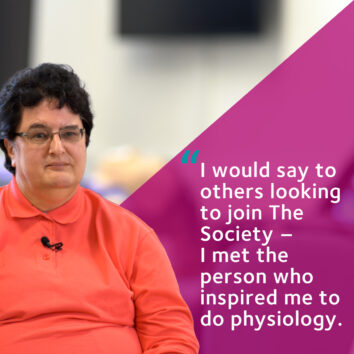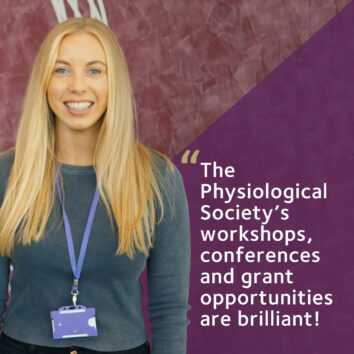

Professor George Havenith
By joining The Society you're not grounded in one discipline, I enjoy the interdisciplinary work. You get information from other areas of physiology through different channels to the magazine, and the journals which is really important for me.
Career journey
Professor George Havenith, PhD, FIEHF, FACSM, is Director of the Environmental Ergonomics Research Centre. He has a Chair in Environmental Ergonomics and Physiology.
Professor Havenith studied Mathematical Biology and Human Physiology at Utrecht University, after which he joined the TNO-Human Factors Institute in the Netherlands. There he worked for 14 years in the area of Human Thermal Physiology and Clothing Science, in the later years heading the Thermal Physiology group. In this period he also worked for one year at Pennsylvania State University, and gained his PhD in Medical Physiology from Nijmegen University, studying physiological responses to heat stress, and producing a simulation model that allowed the impact of individual characteristics of people on their heat stress response to be studied.
At Loughborough University where he now is Director of the Environmental Ergonomics Research Centre, his research covers two main topic areas, one being Human Thermal Physiology / Environmental Ergonomics, and the other being heat and mass (vapour) transfer through clothing. Though these are quite distinct subject areas in terms of research methods and knowledge background, they interact in most research application projects, and are then also supplemented with a third area: clothing ergonomics.
His special contribution to these fields is the multidisciplinary integration of physiology, physics and ergonomics. His work spans from experimental studies, to the development of theoretical frameworks to explain observations, and subsequently to the final application of the knowledge in the field. He produced a number of key papers in these areas, with several of his research methods and clothing heat transfer equations now incorporated in ISO and EN standards.
Many of his research projects and publications involve partners from abroad. He has published widely (over 250 publications in scientific books, journals and conference proceedings as well as over 100 consultancy research reports). He is an editor of the ‘European Journal of Applied Physiology‘, international editor for the ‘Journal of the Human-Environment System‘, and on the editorial board of ‘Ergonomics’, ‘International Journal of Occupational Safety and Ergonomics‘, ‘Biometeorology’ and ‘Journal of Sports Engineering and Technology‘.
His research is used widely, with over 2700 citations in 2024, and over 20,000 in total. He is a fellow of the Ergonomics Society, Fellow of the American College of Sports Medicine, Past Chairman of the European Society for Protective Clothing, and member of numerous committees and professional organisations. George advises a number of renowned international companies on thermal physiology and clothing science.

Hear from Professor George Havenith
Questions and Answers
What inspired you to work in environment physiology?
At university I got acquainted with different facets of physiology, I studied mathematical biology, and then I did a research master’s also in physiology. I tried to combine those, and I really got very interested in being able to model processes, but also, to directly study the physiological processes.
What do you enjoy the most about working as an exercise physiologist?
I enjoy the variety of the work. One day I was studying at -20 degrees and looking at, footwear and foot physiology, blood flow through the feet for mountaineering shoes, and the next, I’m working in Qatar studying athletes working in extreme heat at +35 degrees. Every day it’s almost something different.
I also really enjoy that we look at applied problems. To give you an example for the London Olympics, a couple of years ago, we looked at heat trousers and the target there was to keep the muscles of the athletes warm and by coming up with heat trousers, we were able to improve muscle temperature. And that had the direct effects on performance of the athletes as well.
What’s been the biggest challenge about working in exercise physiology?
One of the biggest challenges for us to work in environment physiology is that it’s multi-disciplinary. Which we enjoy but the the tricky side of it is that you almost have to keep up with the literature in different topics, and keep up with the literature in all of those areas to make sure that you’re at the forefront of research in all of them.
That’s the really tricky thing if you have people that are interested in working in environmental physiology, I think the advice that I would give them is to make sure you look beyond the obvious places to get your experience. Getting experience is always the most important thing if you want to get into a certain area of physiology.
What inspired you to join as a member of The Physiological Society?
It was really the fact that we do interdisciplinary work, which means you’re not grounded in one discipline, which would make it very difficult to have all the knowledge of different areas of physiology.
But by being a member of a society provides me the the foundation and the background and my, sounding board if I have questions that require other areas of physiology.
What do you enjoy the most about being a member of The Physiological Society?
The main benefits of joining The Physiological Society is that I get a lot of information. So getting all the information from different physiology areas, through different channels, the magazine, etc., and the journals is really helpful to me.
What would you say to others looking to join The Society?
What I would say to people that are thinking about joining The Physiological Society is that it’s a great idea. If you’re like me, and physiology isn’t your only topic but you have an interest in other areas of physiology then The Physiology Society has created a community that is there to help you.
The conferences, magazine, etc really helps you to get a wider understanding of physiology. And even if you’re not an expert in all of those areas, it helps you to keep abreast of what is happening in the physiology research landscape.
Timeline
May 1983
MSc in Mathematical Biology and Human Physiology, Utrecht University, NL
June 1983
Start as researcher at the Institute for Perception Research, Netherlands Organisation for Applied Research (TNO)
1990-1991
Sabbatical year at Pennsylvania State University
October 1991
Principal Scientist and group lead thermal physiology, TNO
October 1997
PhD in Medical Sciences, Radboud University, Nijmegen, NL
January 1998
Senior Lecturer Environmental Physiology, Loughborough University
September 2004
Director Environmental Ergonomics Research Centre, Loughborough University
September 2007
Chair in Environmental Physiology and Ergonomics, Loughborough University
2015-2017
Dean Loughborough Design School
Professor George Havenith
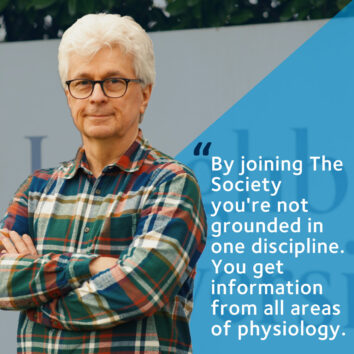
Timeline
May 1983
MSc in Mathematical Biology and Human Physiology, Utrecht University, NL
June 1983
Start as researcher at the Institute for Perception Research, Netherlands Organisation for Applied Research (TNO)
1990-1991
Sabbatical year at Pennsylvania State University
October 1991
Principal Scientist and group lead thermal physiology, TNO
October 1997
PhD in Medical Sciences, Radboud University, Nijmegen, NL
January 1998
Senior Lecturer Environmental Physiology, Loughborough University
September 2004
Director Environmental Ergonomics Research Centre, Loughborough University
September 2007
Chair in Environmental Physiology and Ergonomics, Loughborough University
2015-2017
Dean Loughborough Design School
